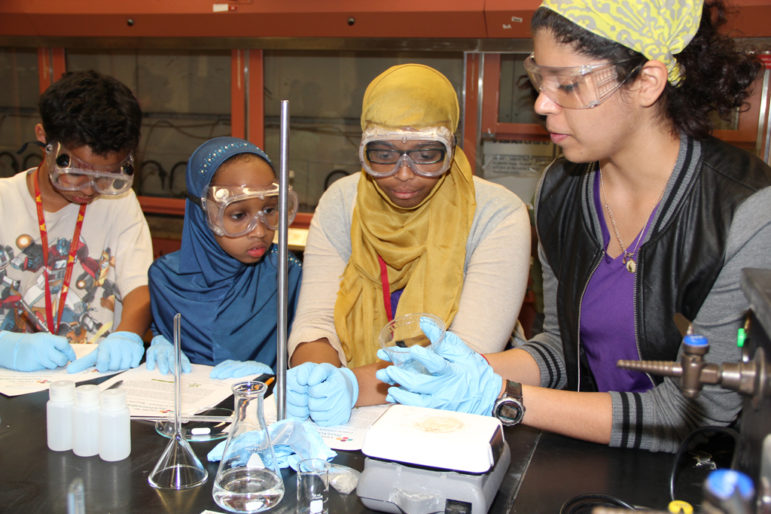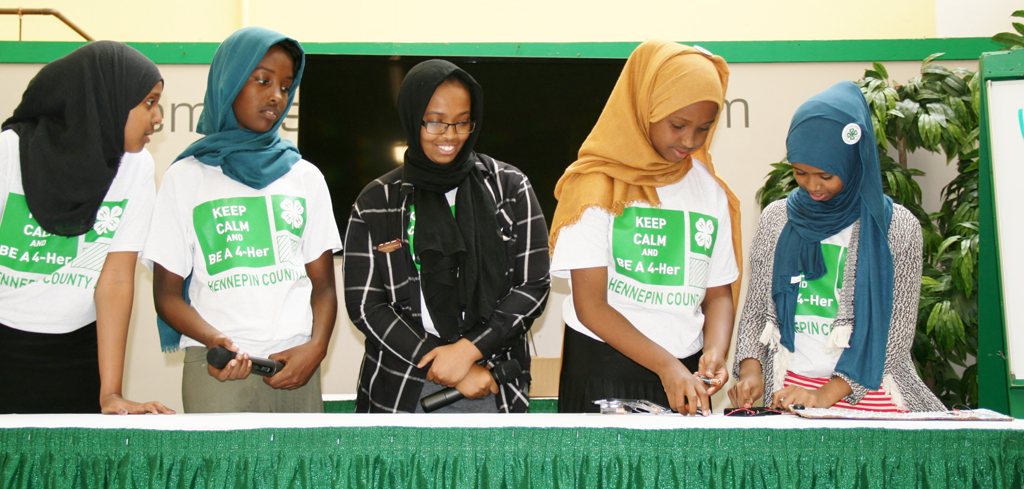After school in the Cedar-Riverside neighborhood of Minneapolis, middle-school kids build small bridges with paper, construct a battery-powered LED light and map out their education and career goals.
They’re part of an after-school 4-H STEM program offered by University of Minnesota Extension in conjunction with Ka Joog, a nonprofit organization that serves Somali youth.
The after-school program, which serves 50 kids in three Twin Cities locations, became so popular it extended its hours and has a waiting list, said Jennifer Skuza, assistant dean of the University of Minnesota Extension.
“It supports young people in their acculturation,” Skuza said. It also helps them think about what they may do in the future, she said.
“It’s a way to engage [the students] in informal learning,” said Joanna Tzenis, assistant Extension professor.
[Related: Teens Push to Lower the Voting Age]
Not only are the kids learning science, but they have a supportive place to explore who they are, Tzenis said.
Minnesota has a population of 40,000 Somali-Americans — the most of any state in the nation. Many of the adults are refugees who fled the civil war that began in Somalia in the early 1990s.

A week-long visit to the University of Minnesota is part of the 4-H STEM program. Here, students visit a chemistry lab at the university.
“They want the best for their kids,” Tzenis said, but they’re raising their children in a different culture than the one they have known.
The kids are often looked upon as different at school.
“They often have to defend who they are to others,” Tzenis said, or at least to explain themselves.
The girls wear hijab, the kids don’t eat pork and they don’t date during adolescence, she wrote in her blog for the University of Minnesota Extension.
And one in three Somali high school students reported being harassed because of race, ethnicity, national origin or religion, according to the 2016 Minnesota Student Survey.
The program is important because it’s a place for exploration, Tzenis said.
It’s an opportunity for the students to talk about who they are and what their aspirations are for the future, she said.
In addition to field trips to the Minnesota State Fair and Minneapolis City Hall, the students spend a week on campus at the University of Minnesota.
“Coming on campus has been really magical,” she said. The students really get an idea of what college might be like, Tzenis said.
Kids in the program have made a YouTube video describing it.
“We do a lot of projects, we go on a lot of field trips and we get to learn a lot,” said one student in the video.
Ka Joog was founded in 2007 by three young Somali adults. The name means “stay away;” the goal of the group is to assist youth in staying away from drugs, violence and radicalization.
Ka Joog offers the 4-H clubs in Cedar-Riverside, in the Eden Prairie suburb of Minneapolis and in St. Paul.
“It broadens the horizons of our youth,” Minneapolis City Council Member Abdi Warsame told the Minneapolis Star Tribune.
“Building community infrastructure is one of the most important ways of alleviating poverty and reducing the risks that our youth are facing,” he told the newspaper.
More related articles:
Medical Needs in After-school Programs: What Would You Do?
In the Nation’s Capital, Youth Heed King’s Call to Serve
Nonprofit Art School Helps Youth Thrive in Skid Row, Los Angeles
































